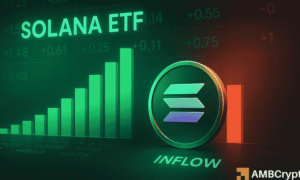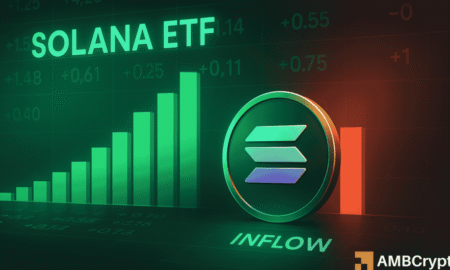Ethereum Faces Sell Pressure Amid ETF Outflows: What You Need to Know
Ethereum (ETH) is currently facing significant selling pressure, a trend that has been exacerbated by various factors including SharpLink’s recent asset dump, persistent outflows from U.S. Ethereum Spot Exchange-Traded Funds (ETFs), and a notable increase in exchange reserves. This article delves into these critical developments affecting the price of Ethereum, analyzing their implications and what investors should stay aware of.
The SharpLink Scenario: Catalyst for Ethereum’s Sell-Off
SharpLink, recognized as the first publicly listed company prominently holding Ethereum, has played a pivotal role in the recent dumping spree. According to reports, SharpLink has offloaded 10,975 ETH, amounting to approximately $33.54 million on the Galaxy Digital OTC exchange. Such large-scale sales from institutional holders not only contribute to market liquidity but also drive prices downward, as evidenced by Ethereum’s considerable loss in value—over 20% in November alone. This development has further weakened Ethereum’s market structure, making it susceptible to even greater declines.
Spot ETF Outflows: A Worrying Trend
One of the most notable concerns comes from the consistent outflows recorded from U.S. Ethereum Spot ETFs. These funds have seen a staggering outflow of $1.022 billion over the past seven trading sessions, indicating a possible disengagement from investors. This scenario can imply a waning interest in ETH and points to growing bearish sentiment among U.S. investors, which could further weaken ETH’s price trajectory. Such outflows from prominent investment vehicles often signal declining overall market confidence, making it essential for traders to monitor these trends closely.
On-Chain Metrics: Signs of Bearish Sentiment
In addition to ETF outflows, on-chain analytics platforms like SoSoValue have reported alarming metrics indicating a bearish outlook for Ethereum. The total outflow of ETH across all exchanges has reached 152,426 ETH in just a week, suggesting a broader trend of selling among both retail and institutional investors. The rising reserves on exchanges are telling of this continued selling pressure; when tokens are deposited into exchanges, it frequently precedes market sell orders. These combined indicators highlight a period of significant bearish momentum for Ethereum, amplifying concerns among market participants.
Market Activity: Increased Trading Volume Amid Declining Prices
Despite the general decline in price, there has been a notable increase in trading volume for Ethereum, which surged by 22% to $38.55 billion. This uptick in trading activity, occurring while the asset’s price is on the decline, raises questions about market participants’ intentions. Increased trading volume can sometimes signify a strengthening bearish trend, as sellers dominate the market. The situation calls for a cautious approach from investors as they navigate through this uncertain territory.
Technical Analysis: Where is Ethereum Heading Next?
From a technical standpoint, analysis suggests that Ethereum is firmly set on a downward trajectory. Following a breakdown of a key support level, the price may potentially drop to as low as $2,750. The overall bearish outlook for ETH could be confirmed if prices continue to trade below the $3,000 mark. Currently, ETH’s Average Directional Index (ADX) stands at 43.60, indicative of strong directional momentum—further affirming that market conditions are tilting toward a bearish scenario in the near term.
Concluding Thoughts: Stay Vigilant in a Volatile Market
As Ethereum contends with mounting selling pressure, driven by large-scale asset dumps, ETF outflows, and rising exchange reserves, the situation underscores the importance of vigilance in the crypto market. Investors must interpret these signals carefully, considering both statistical trends and technical analyses. In the coming days, keep an eye on the price action of ETH and remain informed about broader market trends to make sound investment decisions. The current climate suggests a cautious yet opportunistic approach will serve investors in navigating the complexities of the Ethereum landscape.
By staying updated on these developments, investors can better position themselves for potential market recovery or further decline.
















